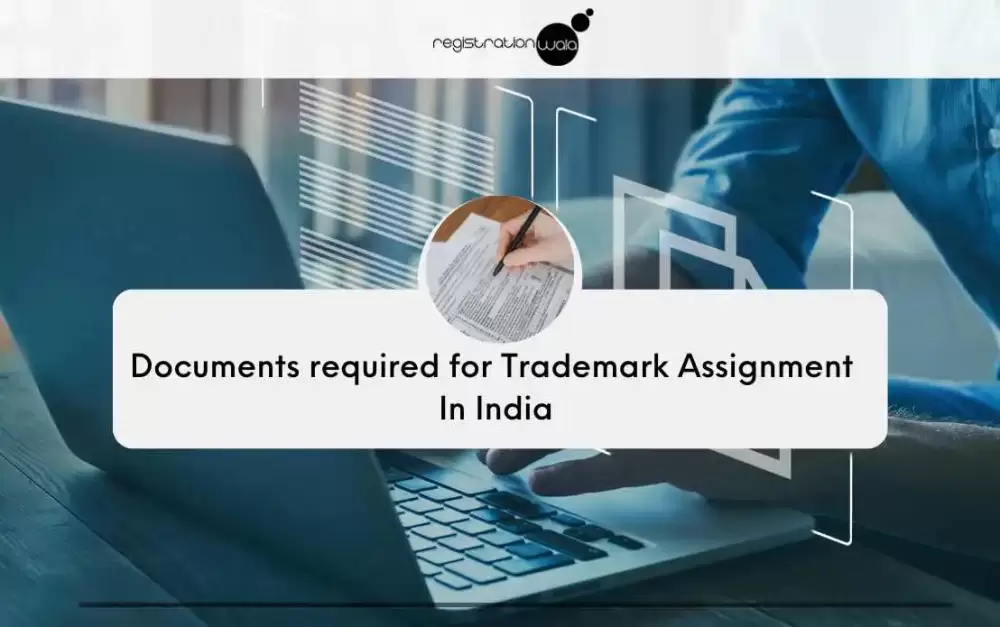List of Required Documents for Trademark Assignment In India
- November 18, 2022
- Registrationwala

- Home
- /
- Knowledge Base
- /
- IPR Services
- /
- Trademark Assignment
- /
- List of Required Documents for Trademark Assignment In India
List of Required Documents for Trademark Assignment In India
What is Trademark Assignment?
Trademark assignment is transferring the Trademark’s right to another entity. The assignment procedure is a crucial step that helps a third party gain instant monetary benefits from the Trademark. With the Assignment option available, the cost of maintenance of the trademark portfolio is reduced.
Need for Documentation
The trademark assignment procedure requires the Assignor and Assignee to submit many documents. The documentation for Trademark Assignment gets confusing to a non-specialist as the collection and submission of documents is a complex process for you. This article will detail the documents required for successful Trademark Assignment in the country.
Required Documentation for Trademark Assignment in India
Only a registered trademark owner can transfer the rights of its Trademark. You can transfer the Trademark rights under any of the following conditions:
- Before the Trademark is registered
- After the Trademark is successfully registered
Note: The document requirements are the same in both cases.
Trademark Assignment before Registration: Form TM – M
For Right’s Transfer before Trademark Registration, thas applicant must file a transfer request through Form TM – M.
Trademark Assignment after Registration: Form TM – P
After trademark registration, Form TM – P, the Trademark Assignment must be submitted.
Both these forms are used to file a request for trademark assignment along with the prescribed fee. Now we will discuss the documents required for the trademark rights transfer application:
Power of Authority
Assignor
There are two parties involved in the assignment process. The Assignor is the owner who assigns the rights to the third party.
Assignee
The Assignee is the entity that receives the trademark rights from the Assignor in the process of Assignment.
But If the Assignment is done with legal aid, then each party must execute a Power of Authority. Here, Power of Authority means granting legal professionals the right to represent them and pursue legal procedures for any business entity.
Trademark Assignment Agreement
For trademark transfer, each party must execute a written agreement to make the Trademark’s Assignment enforceable in the eyes of the law. This is done through the Trademark Assignment Agreement. The Agreement can be seen as an acknowledgement of the transfer of rights and royalties of the Trademark from the Assignor to the Assignee.
The Trademark Assignment Agreement clearly states the following:
- Change in ownership of a registered Trademark
- Involved Parties interest
- Transfer details
Can we enforce the Assignment Agreement in India?
The Trademark Assignment agreement can only be enforceable in India if the involved parties duly execute it with the following:
- Appropriate Stamp Duties
- Certified Notary
- Assignor/Assignee signatures
Involved parties must keep a copy of the Trademark Assignment agreement and submit the originals to the Trademark Registry to give effect to the change of title of the Trademark.
A Trademark Assignment Agreement details the entitlements, rights, and royalties of the Trademark. It also anticipates the risks involved. Therefore, it is advisable to consult a professional before applying for a Trademark Assignment in India.
No Objection Certificate NOC by the Assignor
The NOC encapsulates the Assignor’s wish to transfer ownership. In the NOC, the Assignor agrees that they have no objection to the right’s transfer of the Trademark.
Goodwill Certificate by the Assignor
The Authority needs a Goodwill Certificate when the complete ownership of the Trademark is transferred along with the owner’s goodwill. A goodwill certificate details that the Assignor has a right to all entitlements of the Trademark, including its qualitative value. Also, the Assignor transfers his rights in a trademark to another party. This Goodwill document allows the Assignee to acquire the entitlements associated with the Trademark. It also details the right to use the Trademark unconditionally for the Brand’s goods and services.
Why Goodwill Certificate?
The Goodwill Certificate allows the Assignee to use the Trademark for any type of goods and services. But a trademark assigned without a goodwill certificate can be used only for a specific set of goods and services, i.e., it covers only those categories of goods and services in which the Trademark Assignor has traded earlier.
Trademark Rights Acceptance Certificate
Another essential document that the Assignee submits to the Trademark Registry or the RoT during the trademark assignment is the Trademark Rights Acceptance Certificate. The Assignor can transfer the trademark rights, and the Assignee must also accept the same.
This certificate consists of the written acceptance of the Assignee for the Trademark’s rights transfer. It is also merged with the Trademark Assignment agreement sometimes because it highlights the acceptance of Trademark Rights by the Assignee. The Trademark Assignment procedure is complex. You must seek an expert’s advice for the assignment procedure or related services. To know more about the trademark assignment procedure, connect with the IPR experts at Registrationwala.
- 4695 views
